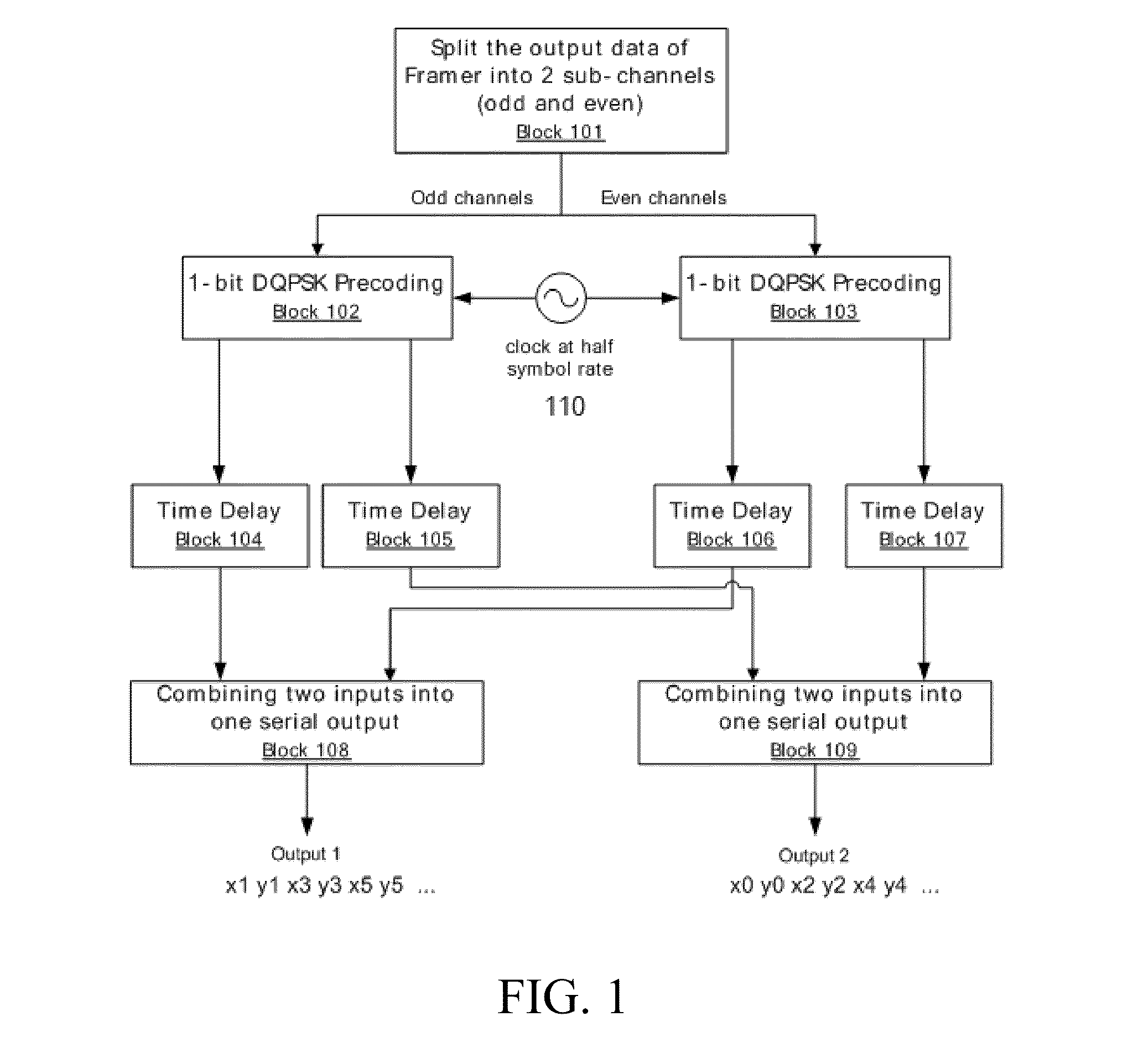Polarization Switching for Optical Fiber Communications
a technology of optical fiber communication and polarization switching, applied in the field of polarization switching, can solve the problems of limited performance of optical fiber communication, no specific documents have been reported to implement polarization switching in the field, and no product has been developed to perform 2-bit dqpsk precoding, etc., to reduce the development time and reduce the cost
- Summary
- Abstract
- Description
- Claims
- Application Information
AI Technical Summary
Benefits of technology
Problems solved by technology
Method used
Image
Examples
Embodiment Construction
[0013]With the availability of two commercial 1-bit differential DQPSK precoders, input data is first de-multiplexed into two branches, each of which is differentially encoded independently by a 1-bit differential DQPSK precoder. The outputs of the two 1-bit differential DQPSK precoders are combined together through a 2×1 multiplexer to generate 2-bit differentially encoded DQPSK signals.
[0014]With reference to FIG. 1, the output data of the framer is first split into odd and even channels (streams) (Block 101). Each channel passes through an independent 1-bit DQPSK precoder (Block 102 or 103) for performing 1-bit encoding. The two independent 1-bit DQPSK precoders are driven by clock 110 at a half symbol rate. The inphase outputs of both 1-bit DQPSK precoders are time-aligned in a pair of time delay units (Blocks 104 and 106) before combining together or multiplexing (Block 108) to generate output 1. The quadrature outputs go to another pair of time delay units (Blocks 105 and 107)...
PUM
 Login to View More
Login to View More Abstract
Description
Claims
Application Information
 Login to View More
Login to View More - R&D
- Intellectual Property
- Life Sciences
- Materials
- Tech Scout
- Unparalleled Data Quality
- Higher Quality Content
- 60% Fewer Hallucinations
Browse by: Latest US Patents, China's latest patents, Technical Efficacy Thesaurus, Application Domain, Technology Topic, Popular Technical Reports.
© 2025 PatSnap. All rights reserved.Legal|Privacy policy|Modern Slavery Act Transparency Statement|Sitemap|About US| Contact US: help@patsnap.com



